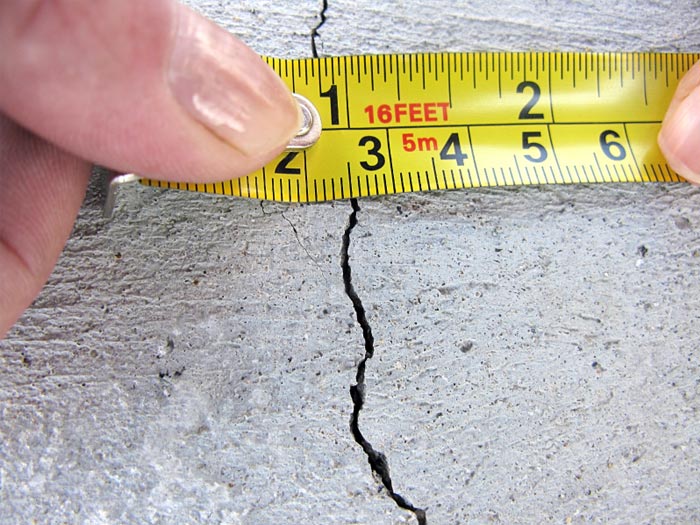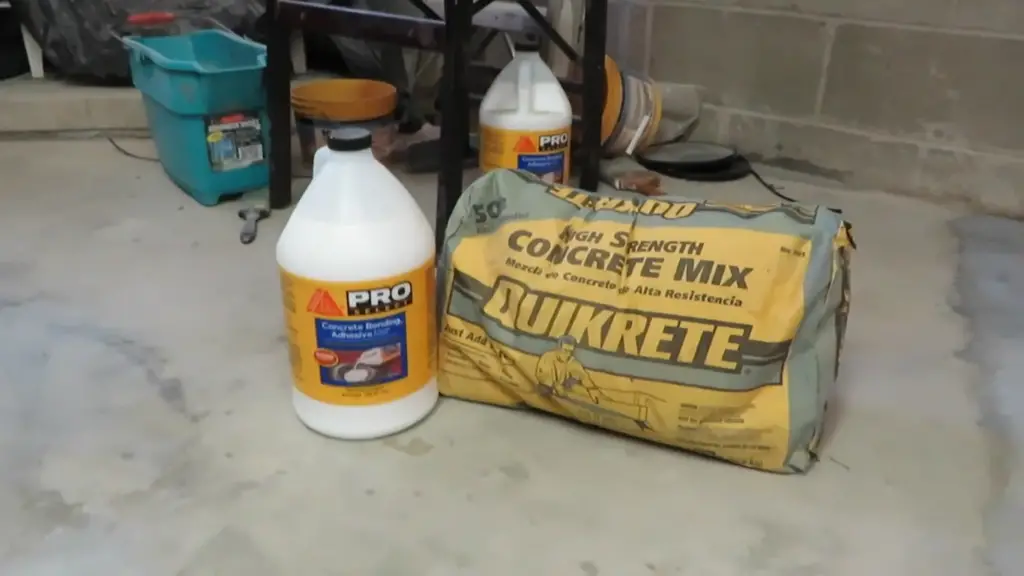Have you noticed ominous cracks snaking across your basement floor? Maybe they’re hairline thin or wide enough to make you question the structural integrity of your entire house. The sight of these fissures can be unsettling, triggering visions of collapsing walls and flooded basements. But before panic sets in, it’s crucial to understand what’s causing these cracks and how to address them. This article will guide you through the process of identifying the root cause of basement floor cracks, understanding their severity, and taking the right steps towards a safe and secure basement.

Image: www.basementsystems.ca
Cracks in basement floors are a common occurrence, particularly in older homes. These cracks are not always a sign of a serious problem, but they can be an indicator of underlying issues that require attention. By understanding the common causes of basement floor cracking, you can gain the knowledge to determine if the situation warrants professional assistance.
Delving into the Causes of Basement Floor Cracks
Cracks in your basement floor can arise from various factors, and understanding these factors is essential to determine the appropriate course of action. Here are some key reasons why your basement floor might be developing cracks:
1. Soil Movement: The Shifting Ground Beneath Your Feet
The earth beneath your house is constantly shifting, expanding and contracting with changes in temperature, moisture levels, and even the weight of your house itself. This natural movement can exert pressure on the foundation, causing it to crack over time. This is particularly true in areas with clay soil, which is known for its tendency to swell and shrink.
2. Foundation Settlement: The Slow and Steady Sink
Foundations are susceptible to settling over time. This sinking occurs when the soil beneath the foundation compresses or shifts, leading to unevenness and potentially cracks in the basement floor. While this is a natural process, excessive settling can cause significant structural damage.

Image: homeprofy.com
3. Poor Foundation Construction: The Root of the Problem
A foundation that was poorly designed, built, or maintained can be more prone to cracks. Insufficient reinforcement, inadequate drainage, and improper backfilling can all contribute to foundation instability and, consequently, cracks in the basement floor.
4. Water Pressure: The Weight of Water
Basement floors are often exposed to water, especially during periods of heavy rain or snowmelt. If the water has nowhere to drain, it can build up pressure against the foundation walls and floor, leading to cracks. This is particularly true in areas with poor drainage or improperly installed sump pumps.
5. Tree Roots: The Underground Invader
Large trees growing near your house can exert considerable pressure on the foundation. As roots grow and expand, they can cause movement in the soil, leading to cracks in the basement floor. If a tree is too close to the foundation, its roots can even penetrate the foundation itself, causing significant damage.
6. Freeze-Thaw Cycles: The Unseen Pressure
In climates with freezing temperatures, the repeated expansion and contraction of water in the soil due to freezing and thawing can put stress on the foundation, causing cracks in the basement floor. This is especially true in areas where soil is susceptible to frost heave.
Decoding the Severity of Cracks
Not all cracks are created equal. Some are harmless, merely cosmetic blemishes, while others might signal a serious structural issue. Here’s a breakdown of how to evaluate the severity of cracks:
1. Size and Width: A Visual Gauge
The size and width of the crack can indicate its severity. If the crack is thin, hairline, and doesn’t widen significantly over time, it might not pose a major threat. However, cracks that are wider than 1/4 inch, jagged, or showing signs of expanding, require closer scrutiny.
2. Location: Where is the Crack?
The location of the crack is also a key factor in assessing its severity. Cracks appearing in the center of the floor are generally less concerning than cracks running along the walls. Cracks near support beams, columns, or at the corners of the basement are more likely to indicate structural issues.
3. Movement: Is the Crack Getting Bigger?
If the crack is widening, extending, or showing signs of movement, it’s a strong indicator of an underlying problem that demands prompt attention.
4. Other Signs: A Comprehensive Assessment
Pay attention to additional warning signs that might accompany the cracks, such as:
- Foundation bowing or shifting:
- Uneven floors or sinking areas:
- Doors and windows that stick or are difficult to open and close:
- Spalling or crumbling concrete:
- Water seeping into the basement:
If any of these signs are present alongside cracks in your basement floor, it’s crucial to seek professional assessment to determine the extent of the problem and the necessary solutions.
Addressing Cracks: Your Options
Once you’ve assessed the severity of the cracks, you need to determine the best course of action.
-
Minor cracks: If the cracks are thin, hairline, and haven’t shown signs of widening, they may be a simple cosmetic issue. You can attempt to repair them using epoxy sealant or other patching materials.
-
Major cracks: If the cracks are wider than 1/4 inch, jagged, or expanding, it’s recommended to consult a professional contractor specializing in foundation repair. Experts can diagnose the problem, determine the best repair method, and ensure that the repair will be effective and long-lasting.
Expert Insights & Actionable Tips
Here are some crucial insights from foundation repair experts:
-
Importance of Professional Assessment: Foundation repair is a complex task, and it’s essential to involve a qualified professional to diagnose the issue and recommend the appropriate solutions.
-
Addressing Underlying Causes: Simply patching cracks without addressing the root cause is unlikely to provide a lasting solution. Identifying and addressing potential issues like drainage problems, excessive water pressure, or soil movement is crucial for long-term stability.
Cracks In Basement Floor Of Old House
Conclusion
Cracks in your basement floor can be a source of worry, but by understanding the causes, recognizing the severity, and taking appropriate action, you can rest assured that your basement will remain safe and secure. Don’t hesitate to seek professional help if you suspect a serious foundation problem. With proactive steps and informed choices, you can address the cracks in your basement and build a foundation for peace of mind.





